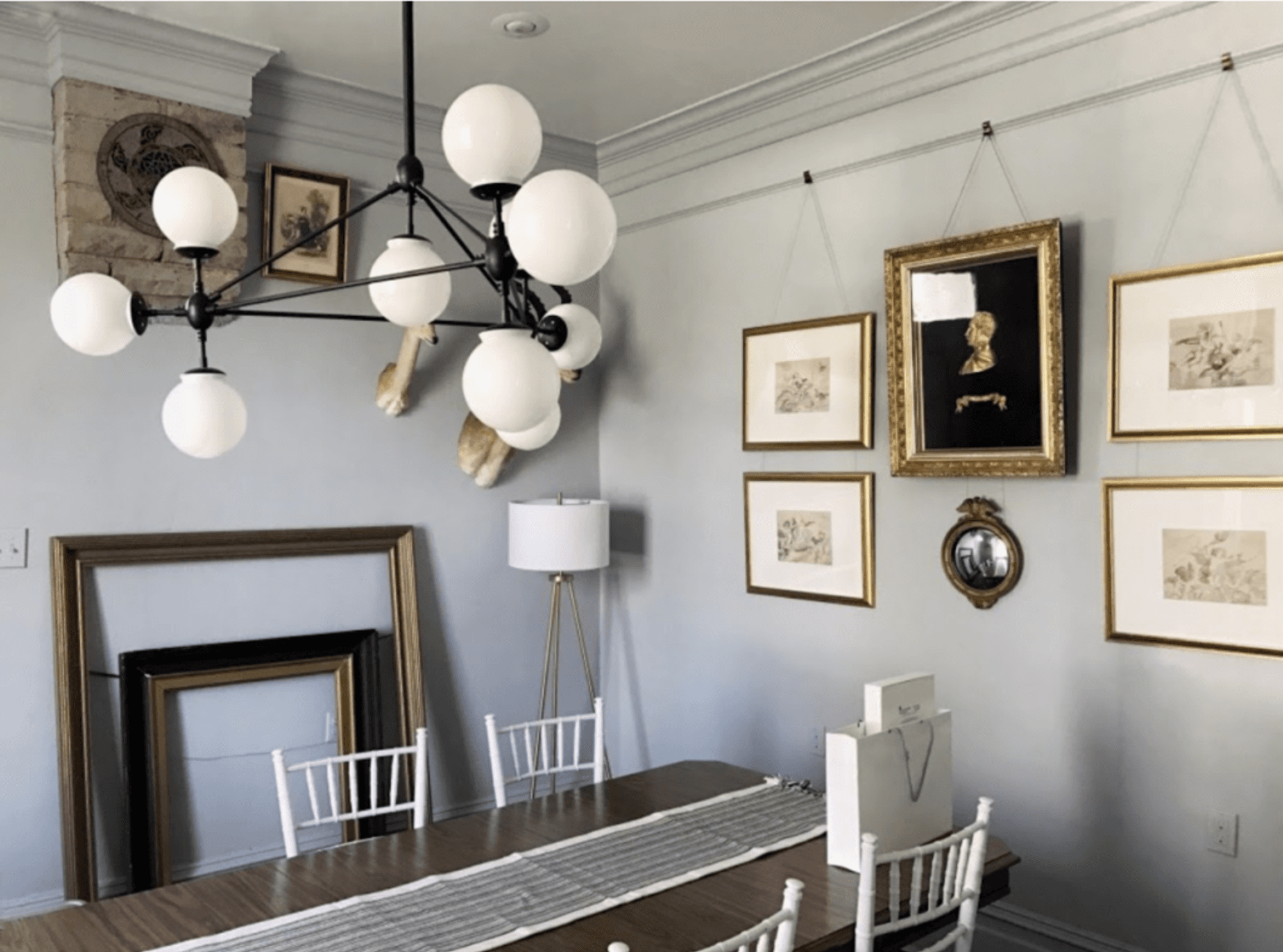How to Build Up Large Crown Molding
August 11, 2021
By: The Finished Space
There are two ways to have large crown moulding. You can simply search for and purchase large crown moulding, or you can create a truly unique and elaborate design by stacking and combining different types of trim.
However, it’s not as straightforward as just putting two pieces of trim on top of each other and calling it a day. There’s some technique to ensuring that your DIY crown moulding looks good in the end.
11 Steps to Build Up Large Crown Moulding
These are the eleven steps you need to take to get that swoon-worthy, stacked moulding look.
1. Choose your Trim
To build your own elaborate layered crown moulding, you can use a combination of baseboards, crowns, picture rails, and more to create a final look that you love. Choose the types of trim you want to use for your crown moulding and purchase them.
2. Design your Crown Moulding Profile
Once you have your trim pieces, it’s time to see how it looks against the ceiling. Layer a short piece of your baseboards, crown, and trim and position them on the ceiling to see how it will look. Test a few different configurations before deciding how you want to place everything. (Keep in mind your baseboard pieces will serve as the base of your design).
3. Find and Mark Wall Studs and Ceiling Joists
Use a stud sensor to find all the wall studs and ceiling joists where you’ll be applying the moulding. Mark them using a pencil line and painter’s masking tape. This step is essential because it’s how you’ll know where to nail in your trim pieces later on, so don’t skip it!
4. Cut your Baseboard Pieces
This is where things begin to get tricky. Cut the ends of your baseboards at a 45-degree angle using a miter saw. You need to cut your pieces at 45-degree angles so they will join perfectly to create a 90-degree angle in the corners of your room.
5. Use Scarf Joints to Join the Baseboard Sections Together
Cut 45-degree bevels on the ends of your baseboards, then overlap them to create a scarf joint. You should be able to join the sections of the wood trim together. Once you’ve done this, nail the scarf joint to lock the pieces of the baseboard together.
6. Attach the Baseboards to the Walls and Ceiling
Now, it’s time to attach your baseboards! First, place the baseboard on the ceiling and secure it by nailing directly into the ceiling joists with a nail gun and construction adhesive. Then, attach them to the wall by using your nail gun to nail them into the wall studs you marked earlier.
7. Create Crown Moulding Support Using Glue Blocks
Remember that your baseboards have to support your crown and other trim pieces. Apply adhesive to glue blocks and place them at each stud. Then, attach each block firmly, with nails at the corners.
8. Make Miter Cuts on Your Crown Moulding
Put a crown-stop on your miter saw to hold your crown moulding at the correct angle for cutting compound miters.
9. Attach the Crown Moulding
Remember the configuration you created in Step 2? Now it’s time to apply your crown and trim pieces in the layout you chose earlier. First, you’re going to nail into the crown moulding two times directly into the glue blocks you placed in Step 7. Then, nail along the bottom and top edges where the crown moulding meets the baseboard to ensure that it’s completely secure.
10. Getting it Perfect – Fill in the Holes
There will probably be some holes and gaps. That’s okay! It’s part of the process. Grab some paintable caulk and cover up any gaps where your moulding is next to the wall. Use spackle to fill up any pesky nail holes.
11. Paint your Custom Moulding
Once the caulk is dry, it’s time to prime and paint your finished moulding. You can choose any color that suits your room’s aesthetic. To keep it classic, stick with whites and creams, or be bold and choose a unique color for your completely custom stacked moulding!
How to Choose the Perfect Layered Crown Moulding for Your Project
As you can see, creating your own built up moulding requires a bit of skill and comfortability with a miter saw! However, if you’re handy and have an eye for design, it’s totally possible to create your own one-of-a-kind stacked moulding.
If creating your own big crown moulding sounds intimidating, you can always purchase thick crown moulding from the start. Do whichever feels right to you. Ultimately, you want to have crown moulding that gives you the look you want.
At Metrie, we specialize in moulding, trim, and finishing touches. So whether you want to build your own layered moulding or buy it – we can help. If you don’t know which type of moulding will look best in your room, take a minute to learn about your options through our Option {M) discovery system.

